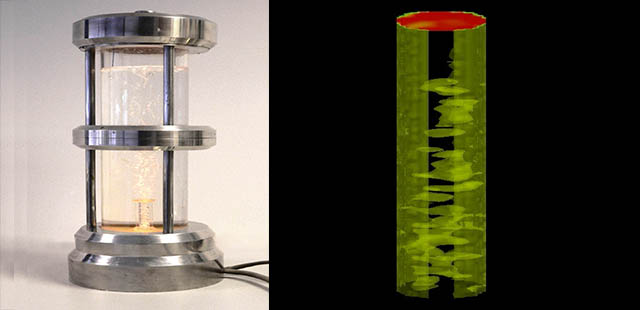Bubble columns are well established reactor vessels used for gas-liquid reactions.
Critical to their performance is good gas / liquid interactions. This requires getting the maximum interfacial area and also effective break-up and coalescence of bubbles.
The use of spargers to disburse the gas and maintenance of a significant head of liquid allows the majority of bubble columns to be run without in-process mixers or agitation.
Electrical resistance tomography (ERT) is the most suitable technique for investigating aqueous based bubble columns (whilst capacitance tomography should be applied for organic systems). In the case of ERT the conductivity of the liquid phase can normally be measured and the conductivity of the gas phase is effectively zero. This allows Maxwell’s equation to be used to determine the gas hold up at different regions within the vessel.
Data can be taken rapidly at different positions within the column and a picture of gas hold up as a function of height and radial position derived. In addition time averaged data can be reviewed to determine if the sparger or other aspects of the process design are leading to gas-rich or gas-lean regions within the column.
Furthermore, it is possible to apply a statistical analysis to the tomographic data and relate this to the conditions of the bubble column. This can provide a 4-20mA control output to maintaining the operating conditions of the reactor.

